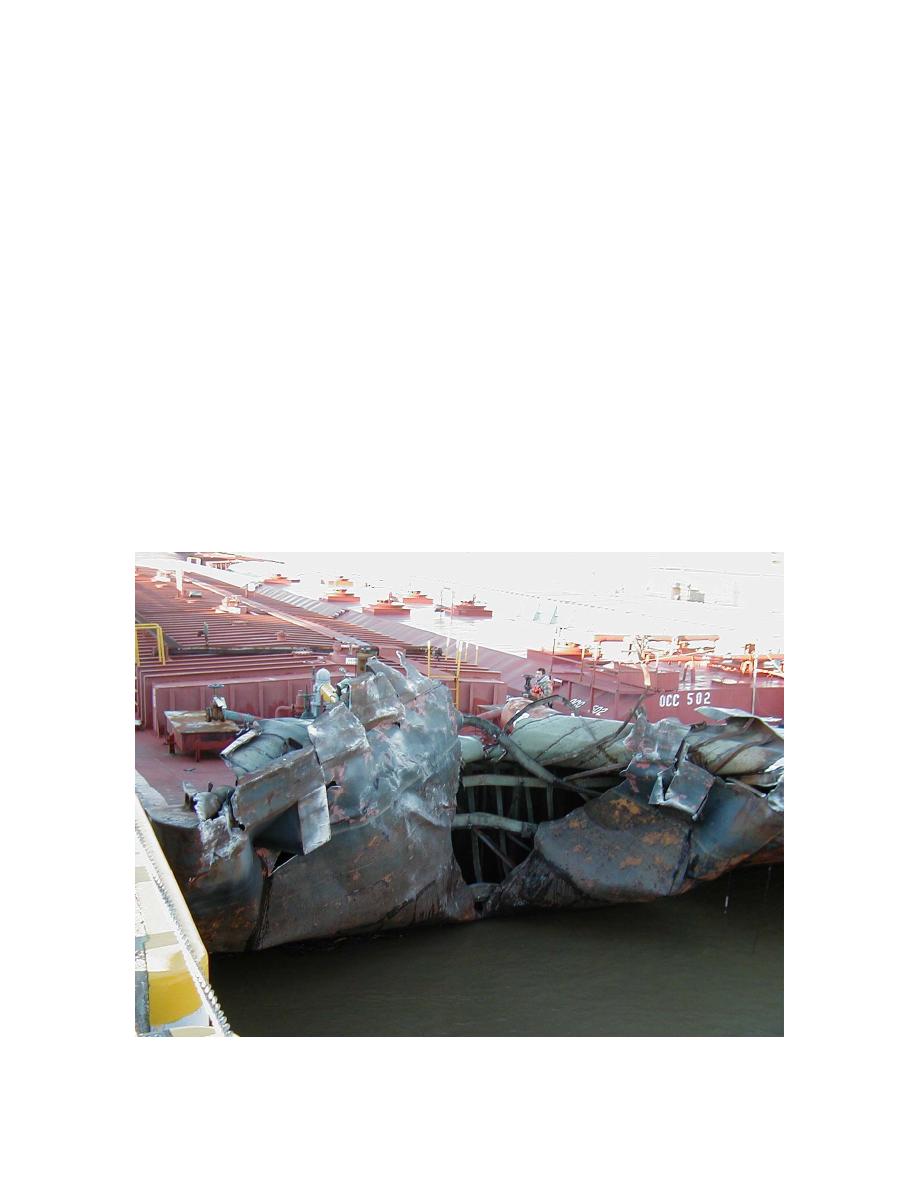
ETL 1110-2-563
30 Sep 04
Appendix B
Design Guidance for Barge Impact Loads
on Rigid Walls
B-1. Introduction
a. Background.
(1) Inland navigation structures are subjected to impact loads due to transiting barge trains. Barge
impact forces for rare events such as operator error, loss of power, or loss of control have dramatically
influenced the overall costs of navigation structures (Patev 1999). Figure B-1 shows the results of a barge
impact on a guard wall bullnose due to a loss of control (extreme) event at Smithland Lock and Dam. The
existing analytical model in ETL 1110-2-338 used for the analysis of barge impact loads was too con-
servative because the method assumed that the barge hull would be crushed in every collision. However,
barge hulls are rarely crushed as a result of impacts with navigation lock walls. With the current emphasis
to lower project first costs, thin-walled precast structures that can be lifted or floated into place are now
being designed; and an accurate estimate of barge impact forces is critical in their design. If some reason-
able risk over the service life of a project is accepted, the initial and long-term construction costs can be
lowered and the wall design can be optimized to maintain a safe and economical navigation structure. A
better understanding of the risks could be gained through decision analyses that include developing trade-
offs between the stakeholders' costs, safety, and operational requirements for the navigation projects
(Tsang, Lambert, and Patev 2002).
Figure B-1. Barge impact due to loss of control at Smithland Locoffs bn 0 0 382.49997 Tm(s) 0 PDn 0 9 82.m<6eO882.4991hl


 Previous Page
Previous Page
